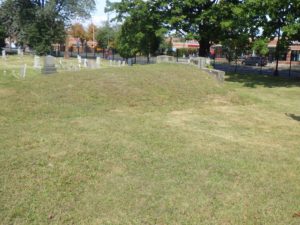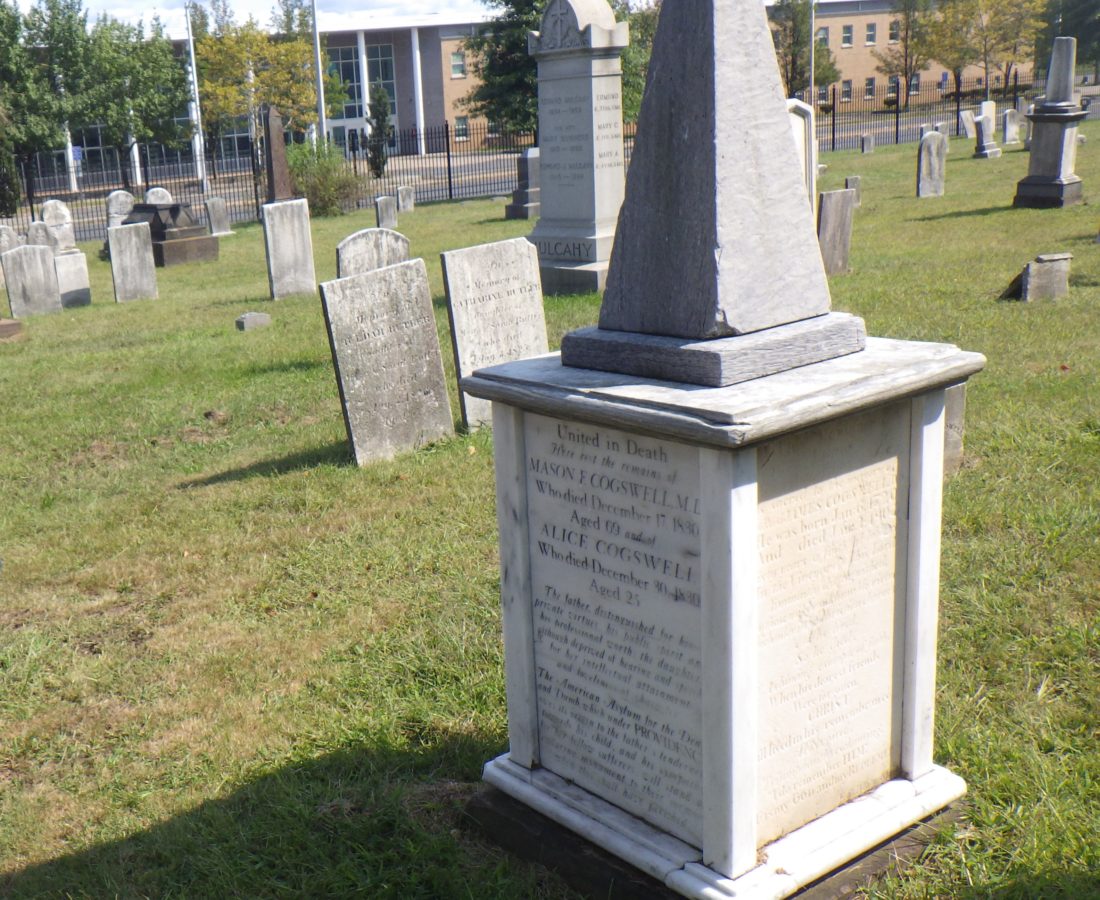Students and fluent speakers of ASL are well acquainted with the origins of ASL–it’s as ubiquitous as George Washington and that damned apocryphal apple tree. But how often do we think of those early students who laid the foundations of Deaf culture?
For the uninitiated, Thomas Hopkins Gallaudet, reverend and resident of Hartford, Connecticut, met his neighbor’s young daughter Alice Cogswell while she played. She had lost her hearing at a tender age and her tutoring had been less than successful. Gallaudet sat with Alice and taught her to write the word “hat” in the dirt.
Alice was an intelligent young lady who only needed the opportunity to learn in her native language. After a lengthy fundraising campaign, a very long stay in Europe, and with the invaluable help of a brilliant deaf Frenchman (future blog post topic), Gallaudet opened the Connecticut Asylum for the Deaf and Dumb (later the American School for the Deaf) in 1817.
In researching Cacophony, I read through hundreds of ASD student names and, even more humbling, their original compositions. Alice Cogswell may have been the first enrolled and the most famous of those early students, but each name rang true to me. I saw them enroll and graduate, I read the accounts of who paid for their schooling and their own words. They wrote on topics from the mundane to the fantastic, current events and history. As I read, I found myself highlighting half the page and calling my partner over to share their charming submissions.
The mystery of these students’ lives compelled me to write a novel about the average students at this extraordinary school at this exciting time in Deaf History—before the Oralists and their ilk took over, when a deaf person could exist as an individual worthy of respect, albeit far from equal.
I traveled to Hartford in September 2017 to continue my research. In practice, it was a pilgrimage to the people and places who inspire me most. In the Old North Cemetery of Hartford, Connecticut I stood before Alice’s impressive white marble headstone. Standing there on that hallowed ground, my awe was tempered by disappointment. Alice’s grave stands, a testament to a woman who died young after inspiring a revolution in education. But I had come to Old North Cemetery in search of a different young woman named Caroline Bedford, a girl of sixteen from New York who was the first student to pass away at ASD in 1824. After searching for hours, I concluded her grave had been lost to time (likely in the last century). Her classmates wrote of her funeral and the school mourned her loss. Reading their accounts, I could not help envisioning what it must have been like for Caroline and her classmates.

Caroline and the other students of ASD are just as important as Alice. They laid the groundwork for the Deaf Culture we know today, despite being almost (some entirely) lost to history. Their perseverance and spirit live on in the fabric of American Sign Language and Deaf History. Their experiences, while not the famous trans-Atlantic journey of Gallaudet and Clerc or the tender moment between Alice and Gallaudet, deserve the same degree of focus and importance. Yet Caroline’s burial place is now a blank field in the cemetery and every student of ASL knows the name Alice Cogswell.
I seek to honor every student at ASD through my writing. While Cacophony touches many facets, my inspiration will always be found in the lists of real people who lived at ASD and those who never left.
